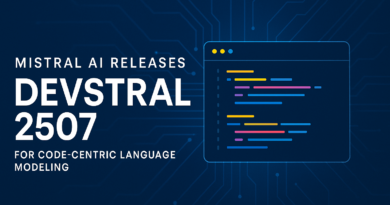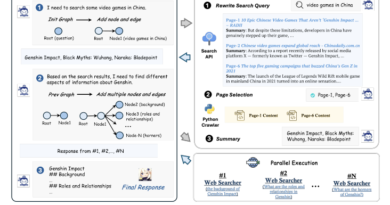MCP Guardian: A Security-First Framework for Protecting Model Context Protocol (MCP)-Based AI Systems
As AI systems increasingly leverage external tools and data sources, the need for secure communication protocols becomes critical. The Model Context Protocol (MCP), recently introduced as an open standard to facilitate seamless integration between AI assistants and external systems, has enabled more dynamic, context-rich interactions. However, with this flexibility comes a new wave of security and observability concerns, particularly as large language models (LLMs) begin to autonomously trigger tool calls via MCP.
Enter MCP Guardian—a middleware security framework that acts as a protective layer between AI systems and external tool servers. Developed to specifically address the vulnerabilities of MCP-based workflows, MCP Guardian introduces robust authentication, access control, observability, and real-time protection mechanisms to ensure AI systems behave reliably and securely.
Why Security Is Crucial for MCP-Based Systems
MCP allows AI assistants to interact with third-party APIs, databases, file systems, and more by enabling tool use at runtime. While this makes assistants more capable, it also exposes them to several potential threats:
- Unauthorized Access: LLMs might access or trigger actions beyond their intended permissions.
- Tool Poisoning: Malicious actors could inject or impersonate tools to deliver harmful payloads.
- Lack of Observability: Without structured logging or tracing, malicious behavior may go unnoticed.
- Data Leaks: Improper access controls could result in confidential or proprietary data being exposed.
These challenges underline the necessity of a zero-trust framework like MCP Guardian to monitor, validate, and control tool interactions dynamically.
What Is MCP Guardian?
MCP Guardian is a security-first middleware framework that sits between the MCP client (AI host environment) and the MCP servers (context/tool providers). It intercepts and mediates requests made by AI systems, enforcing a set of security and observability protocols before allowing any tool invocation to proceed.
At its core, MCP Guardian offers:
- Authentication and Authorization: Every tool call is authenticated using secure tokens, and only pre-approved clients or agents can access specific capabilities.
- Rate Limiting: Requests are throttled to prevent misuse or runaway calls from LLM agents.
- Logging and Tracing: All interactions are logged in real time, supporting audit trails and post-event forensics.
- Web Application Firewall (WAF) Scanning: Requests are scanned for malicious patterns or payloads using a lightweight WAF engine.
- Dynamic Policy Management: Custom rules and configurations allow organizations to tailor the middleware to their specific security needs.
Technical Architecture
MCP Guardian adopts a modular, stateless architecture, designed for scalability and ease of integration. Here’s a breakdown of its key components:
1. Request Interception Layer
This layer monitors all tool invocation requests. It captures metadata (e.g., source IP, tool endpoint, request parameters) and enforces:
- Signature validation (for signed tools)
- Token-based authentication
- Endpoint-specific access control
2. WAF and Rule Engine
Incoming requests are inspected via pattern-matching and heuristic-based anomaly detection. WAF rules can be customized to detect:
- SQL injections
- Command injections
- Excessive payload sizes
- Unauthorized API calls
3. Rate Limiter
Using time-based counters, the rate limiter prevents denial-of-service attempts and ensures fair usage across agents. It supports:
- Per-agent thresholds
- Burst allowances
- Adaptive backoff
4. Audit Logger & Tracer
Each request is logged with context:
- Request origin
- Timestamp
- Parameters used
- Tool triggered
- Response metadata: This allows easy debugging, monitoring, and compliance reporting.
5. Policy Configuration Interface
Security administrators can define tool access policies using YAML or JSON, covering:
- Tool permissions
- Role-based access
- Allowed parameter ranges
- Resource usage thresholds
Experimental Evaluation
The MCP Guardian framework was evaluated using a reference implementation built in Python and tested on a weather-tool MCP server running on an 8-core CPU VM. The tests included:
Scenario-Based Security Tests
- Unauthorized token access → correctly denied
- Command injection payload → flagged and dropped by WAF
- Excessive request bursts → throttled via rate limiter
Performance Benchmarks
- Baseline Latency: ~5 ms (no MCP Guardian)
- With Full Protection: ~8-9 ms (approx. 3–4 ms added overhead)
- 95th Percentile Latency: Within acceptable range for interactive AI assistants
These results show that MCP Guardian adds minimal overhead while significantly improving system security.
Benefits Over Previous Methods
| Feature | Traditional Approaches | MCP Guardian |
|---|---|---|
| Token-Based Authentication | Partial or missing | ✅ Strict validation |
| Rate Limiting | Rarely implemented | ✅ Dynamic, per-agent enforcement |
| Logging and Tracing | Inconsistent or absent | ✅ Unified and structured |
| WAF Protection | Not integrated | ✅ Built-in lightweight engine |
| Tool Signature Verification | Largely ignored | ✅ Encouraged via cryptographic sigs |
| Defense-in-Depth Architecture | Siloed | ✅ Centralized middleware model |

Recommendations for Adoption
For organizations building agentic AI workflows, it is imperative to:
- Adopt zero-trust architectures: Always verify requests, never assume trust
- Isolate tool access: Limit each tool’s scope via sandboxing or containers
- Log everything: Retain visibility into agent behavior for compliance and debugging
- Educate developers: Ensure engineering teams understand token hygiene and security best practices
Future Directions
The roadmap for MCP Guardian includes:
- Real-Time Anomaly Detection: Using ML to detect unusual patterns across requests
- Tool Registry Services: Official registries for vetted and signed tools
- Standardized Policies: Sharing and reusing security templates across deployments
- OpenTelemetry Integration: Better observability through standard tracing libraries
These features will ensure that as MCP adoption grows, organizations remain secure and compliant while building increasingly capable AI assistants.
Conclusion
MCP Guardian represents a critical step toward securing AI systems that rely on Model Context Protocols. By introducing a layered, modular, and transparent security middleware, it bridges the gap between flexibility and control in AI agent-tool interactions.
With built-in defenses like token validation, rate limiting, and WAF scanning—and minimal latency overhead—MCP Guardian offers an ideal solution for organizations looking to adopt MCP without compromising security. As AI assistants become more autonomous and powerful, frameworks like MCP Guardian will be central to ensuring trust, safety, and accountability.
Check out the Paper. All credit for this research goes to the researchers of this project.
Do you have an incredible AI agent or app? Let’s make it shine! Contact us now to get featured and reach a wider audience.
Explore 3800+ latest AI tools at AI Toolhouse 🚀. Don’t forget to follow us on LinkedIn. Do join our active AI community on Discord.
Read our other blogs on LLMs 😁
If you like our work, you will love our Newsletter 📰






